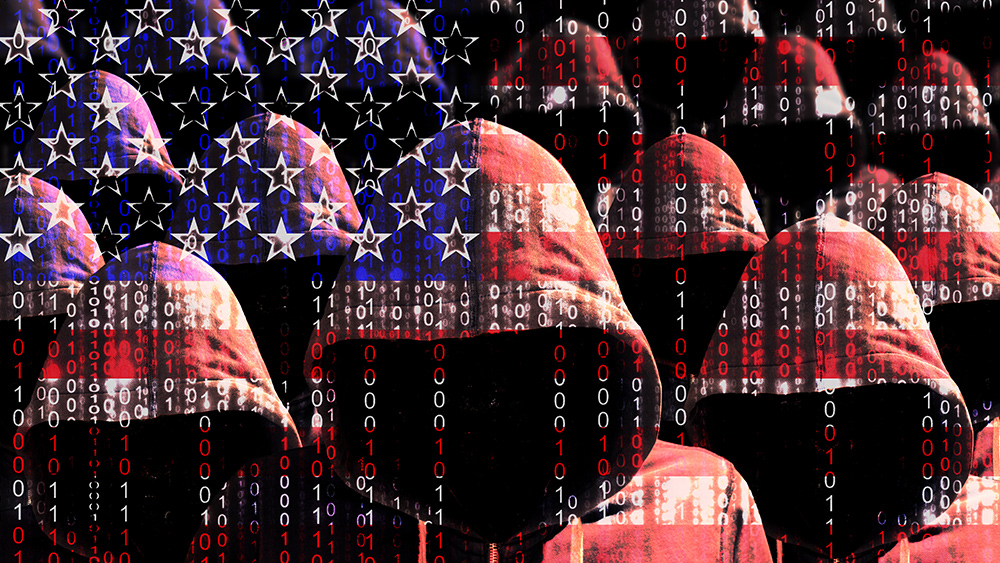- The Chinese state-sponsored group has operated in U.S. telecom networks since late 2022, stealing call records, monitoring surveillance activities and compromising devices of political figures, marking one of history’s largest cyber breaches.
- The hackers used zero-day exploits, phishing, supply chain infiltration and persistent network access to extract sensitive data, including operational tactics of U.S. intelligence agencies.
- China invests heavily in cyber warfare programs, training 30,000 specialists annually and centralizing hacking under entities like PLA Unit 61398, creating a globally dominant cyber-military force.
- U.S. telecoms lack enforceable cybersecurity standards, with outdated laws like CALEA exacerbating vulnerabilities; companies like AT&T delay critical updates, risking mass compromise.
- Immediate reforms, including modernizing telecom infrastructure, stronger federal regulations and global alliances, are critical to prevent ongoing espionage and protect democratic systems.
Digital breach with epochal implications
In late 2024, American authorities faced a stark reality: a Chinese state-sponsored hacking group named Salt Typhoon had embedded itself into at least eight U.S. telecom networks since late 2022, stealing millions of call records, monitoring surveillance requests by U.S. agencies and targeting devices used by political figures, including members of major U.S. administrations. This unprecedented breach — revealed through coordinated warnings from the FBI and Cybersecurity and Infrastructure Security Agency (CISA) — has ignited alarms over escalating cyber threats to national security and public safety. Federal officials admit they cannot fully expel the hackers, who remain entrenched, and lack clarity on the full extent of infiltration. Senate Intelligence Committee Chair Mark Warner deems this the worst breach in American history, underscoring China’s now-entrenched cyber-spying prowess, honed “as the most active and persistent threat actor” globally.
Analysis suggests Salt Typhoon accessed advanced telecom infrastructure, including smartphones and encrypted devices, to extract sensitive data. In one noted case, they infiltrated a major U.S.-based satellite communications provider, exposing security protocols that shielded operational details about critical infrastructure like power grids and military bases. The compromised call records provide insight into the networks of political figures, raising concerns about domestic destabilization efforts ahead of the 2024 election cycle.
The Salt Typhoon espionage: A blueprint for cyber supremacy
The Salt Typhoon group’s multiyear campaign mirrors a broader pattern of Chinese cyber aggression. Beginning as early as two years ago—per FBI and CISA investigations — the group targeted not only data theft but operational disruption, accessing vulnerabilities in telecom infrastructure to evade detection. By infiltrating systems long-term, they gained insights into U.S. surveillance practices, potentially shielding Chinese operatives under scrutiny.
Methods included exploiting zero-day vulnerabilities in telecom software, phishing government contractors and compromising vendor supply chains to plant malware. Analysts note that Salt Typhoon’s sustained presence allowed it to monitor real-time agency requests for wiretaps or data, giving Beijing an inside track on U.S. law enforcement tactics. A November 2023 FBI report highlighted how stolen communications from U.S. senators and foreign diplomats revealed intelligence-sharing patterns between Washington and allies, weakening U.S. diplomatic strategies.
The group’s actions were exposed in November 2023 when the FBI and CISA disclosed stolen call logs and private communications from U.S. government and politically active individuals. A December 3 joint advisory from the NSA, CISA and international partners warned of Salt Typhoon’s ongoing threat, urging urgent hardening of comms infrastructure. Analysts highlight the breach’s dual impact: direct espionage alongside destabilization of systems vital to democratic secrecy.
China’s ascendant cyber strategy
China’s tech militarization dates to 2012–2013, when elite cyber-offensive programs were launched under Xi Jinping’s directive, amid global exposes about NSA overreach and Chinese crackdowns on dissidents. This pivot prioritized cultivating 30,000 cyber specialists annually via state-certified programs while centralizing hacking communes under entities like the People’s Liberation Army (PLA) Unit 61398. Decades later, these investments reveal their intent: a hybrid cyber-military force now qualitatively superior to Western defenses.
Beijing’s cyber strategy combines espionage, economic theft and geopolitical disruption. For instance,Salt Typhoon’s tactics mirror those of earlier groups like APT 10, which targeted defense contractors, and APT 41, specializing in telecom intrusions. By integrating civilian hacking collectives like the “Shadow Brokers” into state-sponsored frameworks, China has blurred the line between criminal and state-sponsored attacks.
Closing regulatory gaps: Accountability or peril?
The breach spotlights deficiencies in U.S. telecom security. Unlike financial sectors — subject to strict cybersecurity oversight under the SEC — telecoms face laxer federal requirements, with the FCC barred from mandating network-wide encryption or access controls. Exposing this gap, former FCC chair Tom Wheeler noted that 1994’s CALEA law, whose security compromises spies now exploit, remains unupdated, creating a “situation everyone in 1994 missed.” Compounding risks are current shifts like cost-cutting infrastructure reforms, incorporating software solutions that increase attack surfaces.
Major telecom companies, including AT&T and Verizon, have been slow to implement Multi-Factor Authentication (MFA) for employee accounts or adopt decoy networks to detect intrusions. Meanwhile, the Federal Communications Commission lacks the authority to enforce penalties for non-compliance, creating a regulatory void China’s hackers have exploited.
A siren call for digital sovereignty
The Salt Typhoon incident is not merely a security alert—it crystallizes a national reckoning. China’s targeting of critical U.S. systems signals a new era of digital warfare where every wiretap or citizen’s call is a potential weapon. Sen. Warner’s warning — “every politician’s conversation… up for grabs” demands immediate action: stricter telecom regulations, legacy infrastructure modernization and global alliances to counter Beijing’s cyber-pragmatism.
Proposals gaining traction include the Secure Telecom Networks Act of 2023, which would fund replacement of vulnerable equipment and grant enforcement authority to the FCC. Privacy advocates argue such measures risk overreach, but national security experts stress that without these steps, “critical infrastructure will remain barn doors with no locks.” The path forward requires uncomfortable trade-offs between connectivity and sovereignty—and time is not on America’s side.
Sources include:
